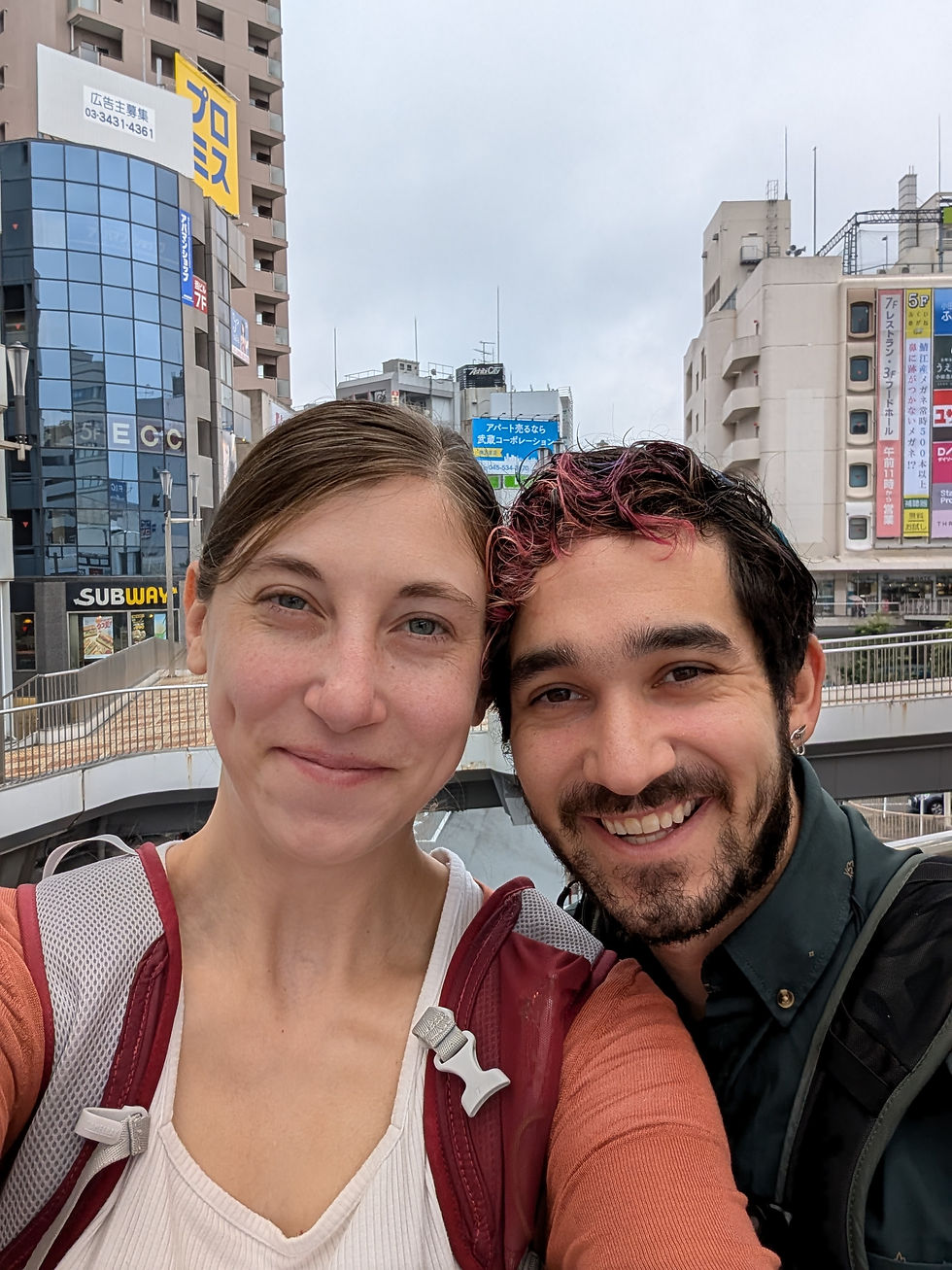Ikebukuro, Tokyo
- Jennifer

- Jun 28, 2024
- 4 min read
For my 30th birthday, I decided to quit my job and explore the world.
It was getting really tough to see everything I wanted to see in ten day increments every year.
When I was 26 years old, I moved to Japan with my now ex-husband. He was an officer in the military, and we were privileged to have a small townhouse on base with our two German Shepherds Cash and Charge. We owned a van and a kei (micro) car. I walked the dogs around Iwakuni Marine Base twice a day every day for the year that I was there. Since it was the height of the Covid pandemic, we traveled infrequently, but were able to drive to a few truly amazing places from Kyoto to Nagasaki. We saw many animal exhibits and gardens, enjoying the nature of Japan. After discovering that the Miyajima ferry is indeed large dog friendly, I took Charge (Cash had arthritis) to the island to explore, where he terrorized the friendly deer who knew no predators. After my ex decided to stray, again, Charge and I left for the United States.
On July 3rd 2023, Charge passed away from spleen failure. In the following October, my partner and I had to leave our home in Hampden. I had always wanted to return to Japan, and it seemed like the perfect time to do so was near. I don’t know how the world will change in a year. I don’t know what this will mean for my career. If I had to pick, I would have stayed in the US with Charge forever, but I didn’t get that choice.
So here we are, what David and I refer to as, “Part One.”

Part One
We arrived in Japan in late June and stopped at a konbini (convenience store) to stock up on onigiri (rice balls), chocolate, and other interesting snacks. We stayed with friends, Naomi and Alfred, in accommodations near Ikebukuro, Tokyo.

The anime Durarara!! (which takes place in Ikebukuro specifically) did not prepare me for the calmness of the quiet family neighborhood, no headless horseman or ridiculous street fights to be seen. More realistically, it was a much, much quieter park of Tokyo than Shinjuku and Shibuya, both major centers on the same train line heading south, which we frequented during our stay. For goals for this trip, I wanted to hike Mount Fuji, see a few key temples and shrines, and experience the cultures of the countries I am visiting.
We started off by visiting the Shinjuku Gyoen National Garden, where David ate kuzukiri, some weird sort of snotty noodle that one pushes out of a bamboo mold onto ice, and I would honestly not recommend it*. It wasn’t bad, it was just something Alan Rickman would have eaten in Galaxy Quest**. Japanese national gardens tend to have an entrance fee of $3-$4, and it’s worth it for the preservation and maintenance and these beautiful, serene areas. My only sadness is that I tend to end up at these gardens around very late spring or the height of summer when nothing is in bloom or pretty colors, but the bridges, paths, and greenhouse at Shinjuku Gyoen were wonderful.
Our friend Alfred took us climbing at B-PUMP Tokyo, which has a bouldering section on the roof overlooking Akihabara! It would have been super-duper cool, if it weren’t for the 95°F+ weather. That top floor also had a transversal wall that allows one to climb horizontally for a distance similar to a top rope climb, which was fun (especially for those of us who don’t typically boulder climb). Overall, despite the difficulty of Japanese rated climbs, I would highly recommend that gym.


We visited several art instillation, hunted for shrine stamps, tried new coffee places, tried new themed cafes, went to the Tanabata Festival at two separate temples, and visited DisneySea (there are two Disney parks, but DisneySea is the one unique to Japan). Despite the language barrier, I went to quite a few museums in 2021 and have continued the trend, though teamLab’s installations are definitely geared towards tourists so I’m not sure what quite counts. I’m still hoping to visit the Yayoi Kusama Museum here and the Ghibli museum again, since David has not been.
The shrine hunting is uniquely Japanese; there are some conflicting origins to the goshuincho (shrine book or book of seals). Most shrines (Shinto) and temples (Buddhist) have goshuin, which is a hand written seal that represents their institution. As proof of pilgrimage, visitors can have their goshuincho stamped by a priest or monk. It used to be something only the truly devout did, but as the stamps gained popularity with the younger generation and tourists, and the practice has been opened up. It also earns shrines and temples quite an income, which helps with their operations. The most common theory, and the one I heard, was that the stamps were originally proof that a devout person knew their sutras. Now they reflect the many historical and sacred places myself and others have had the privilege of visiting.

I’ll get into more detail about some of these specific trips and the other shenanigans we got into in future posts.
For more information on goshuincho, visit: https://www.discoverkyoto.com/kyoto-voice/goshuincho/
*David notes it wasn’t bad at all. It was actually quite delicious.
**This might be the only Tim Allen movie I actually recommend, and if you haven’t heard of Galaxy Quest, I recommend at least looking it up.




















Comments